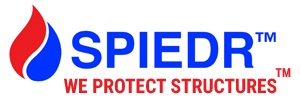Ignition
A wildfire can be ignited by many different occurrences, both natural and human-caused. Common causes of wildfire ignition include lightning strikes, embers from burning debris (or other wildfires), unattended/improperly put out campfires, cigarette butts, and even arson.
Spread
Once a fire is lit, it begins to spread. How quickly and far a forest fire spreads depends on a number of contributing factors, including wind, drought, available fuel, and extremely hot weather. If conditions are right, a wildfire can spread very far very quickly, which is why immediate suppression tactics are so important.
Suppression
When it comes to wildfire management and suppression, firefighter teams will evaluate the fire in terms of access points, weather conditions, hazards, natural barriers and breaks, and determine a strategy to best use the fire suppression resources available. Once a wildfire is considered non-threatening and contained, it will be left to burn with careful monitoring in case it grows again. Suppression tactics can involve the use of aircraft and ground teams.
Extinguish
Fire teams slowly extinguish fires in stages, beginning with containment, cooling of control lines, and eventual complete extinguishment.
New Vegetation Growth
In the location of a previous wildfire, new growth flourishes. The ash from the burn provides the soil with plenty of nutrients, and the forest floor gets more sun because tall shading branches have been burned away. These areas grow verdant and wildlife begins to return.
Improved Preparedness
After a wildfire occurs, fire teams reflect and reevaluate their firefighting tactics to come up with even more effective strategies for the future. Communities, fire departments, and individuals can improve their wildfire preparedness with SPIEDR’s help. We provide wildland firefighting equipment, consulting, and training.


